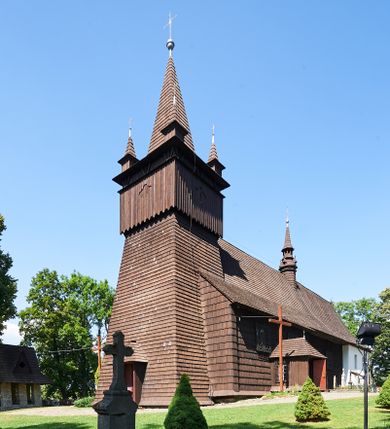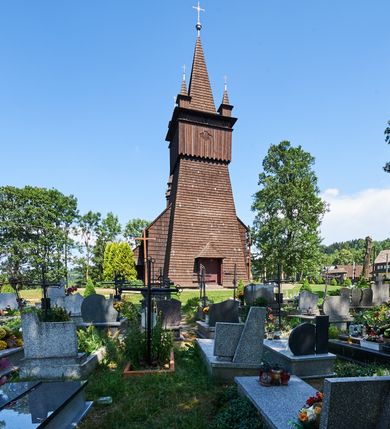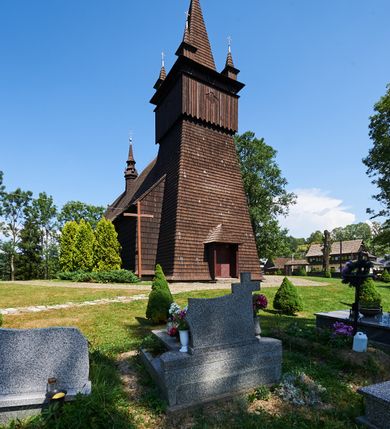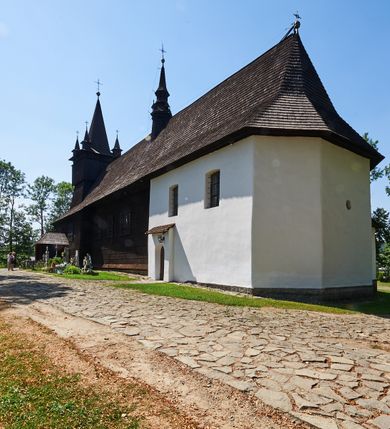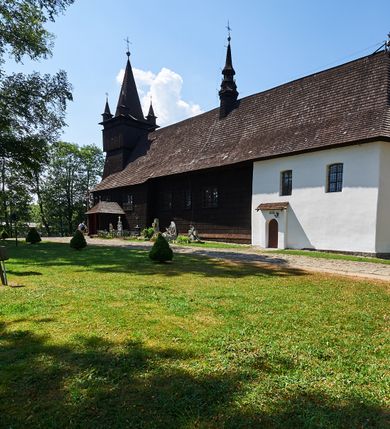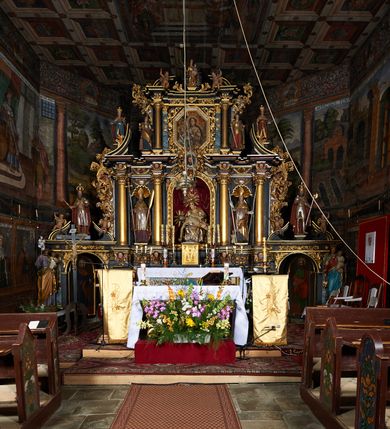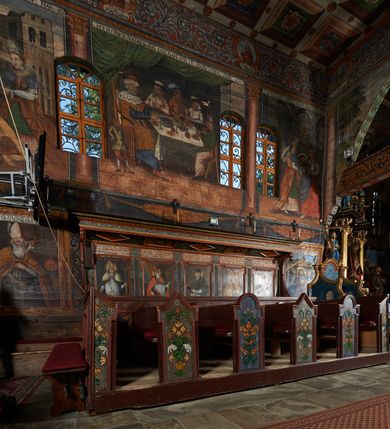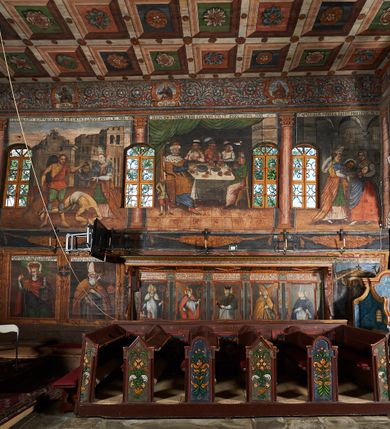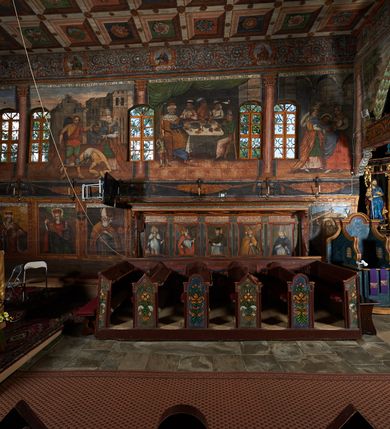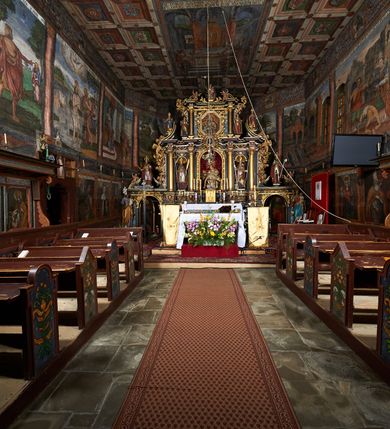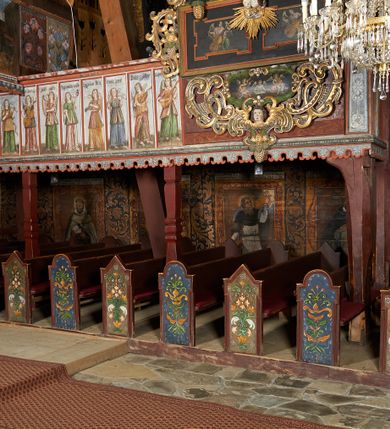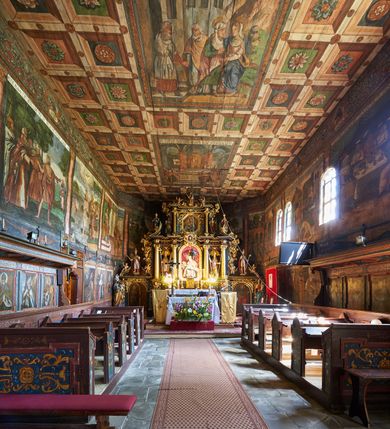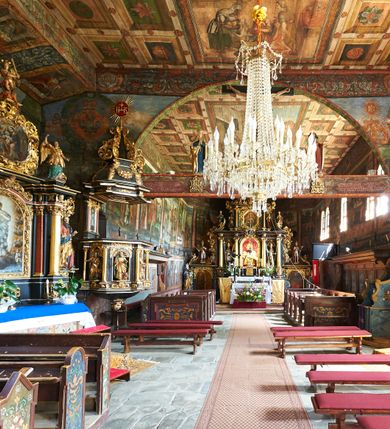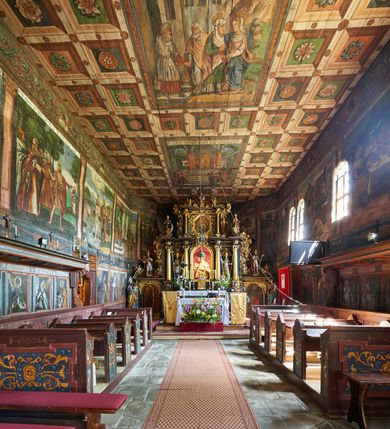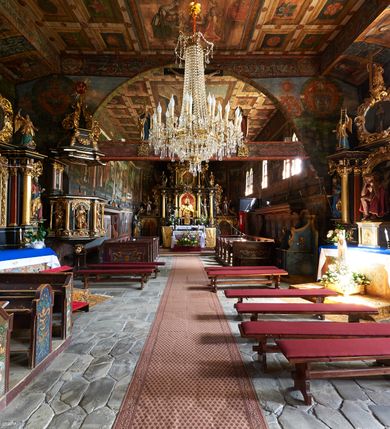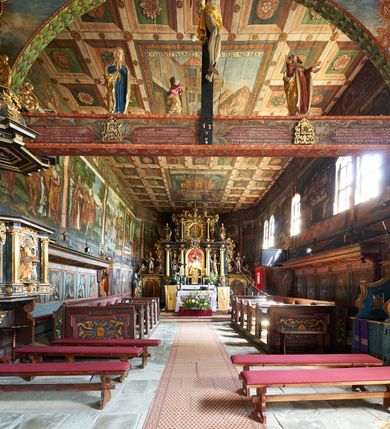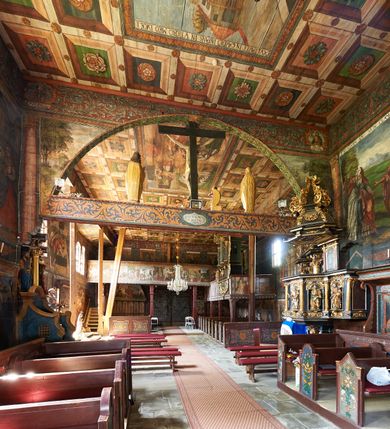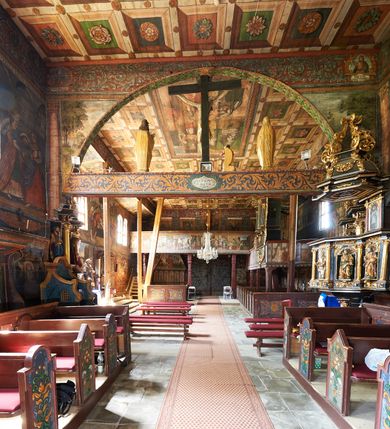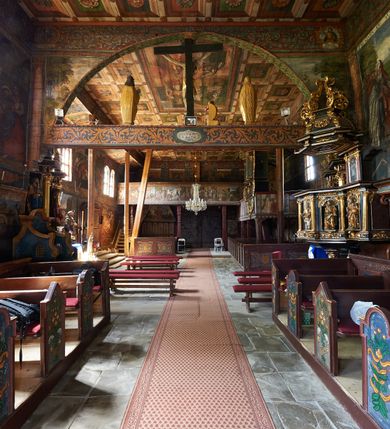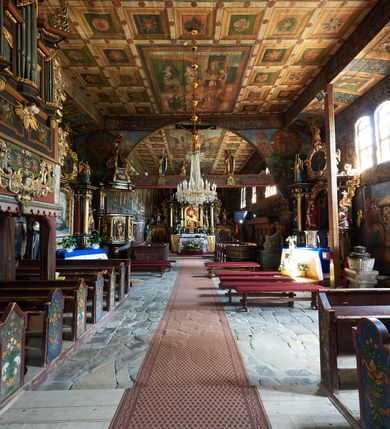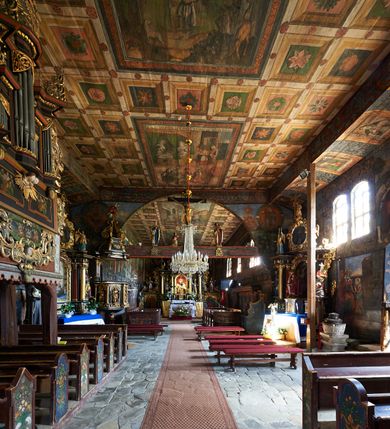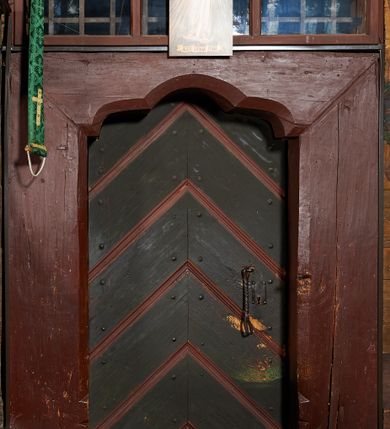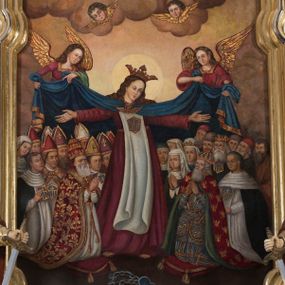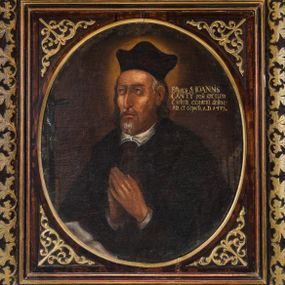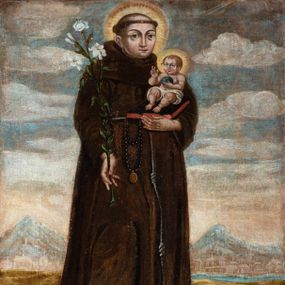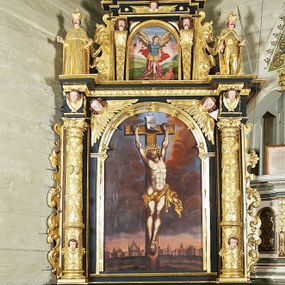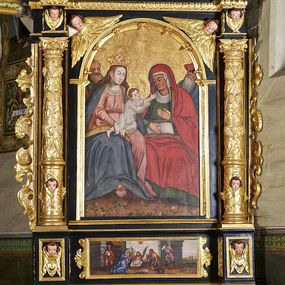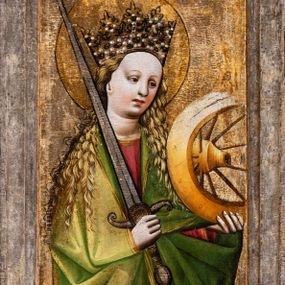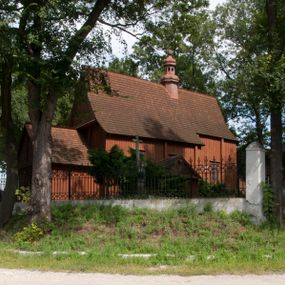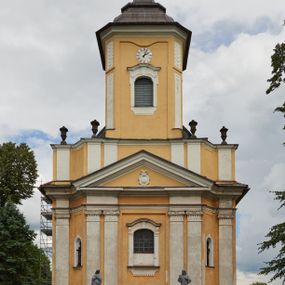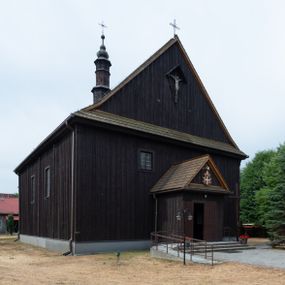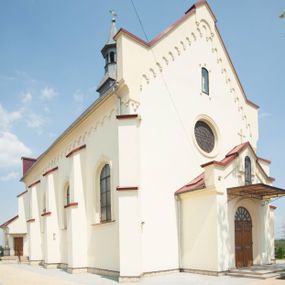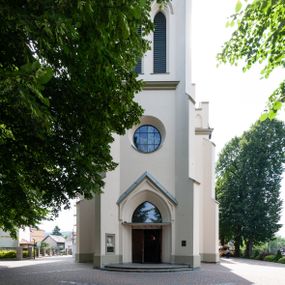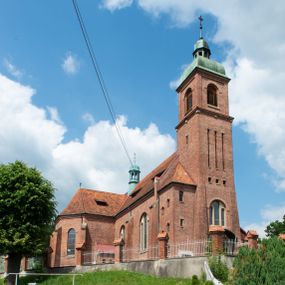
St. John the Baptist's Church in Orawka
Identifier
DZIELO/13412
Amount
1
Catalogue note author
Maria Działo
History of work
Between 1647 and 1649 one of the pioneers of re-Catholicization, a priest of the Diocese of Cracow, a master of liberal arts at the Academy of Cracow, father Jan Sczechowicz came to Upper Orava. The Archbishop, Primate of Hungary entrusted this priest with the restructuring the Church of the entire region. Sczechowicz received a number of tasks and permissions, he could also consecrate church equipment and cemeteries. In 1650 he started to build a church in Orawka. For this purpose, a land was purchased for 20 tsarist thalers from farmer Jan Cieślak. - When writing his will in 1659, Sczechowicz modestly assured that the funds for this purpose were collected from numerous alms, donations and his small contribution. However, the testimony given by the peasants from Orawka on the persecution of Catholics in Orava region show that father Sczechowicz provided the above amount himself. Soon the Lutheran administration questioned this sale of land as illegitimate, because at that time the peasant could not own his own land. Despite these objections, the construction of the church was already well-advanced at the beginning of 1651. As early as in February 1651, father Sczechowicz was able to celebrate the Holy Mass at the portable missionary altar, where the relics of St. Zephyrinus, St. Catherine of Siena's veil and St. Dorothy were placed. In 1654 the building received protection by Emperor Ferdinand III, who, by means of a formal document, took father Sczechowicz and his work under his care. A year later, he also awarded Sczechowicz the ennoblement together with a coat of arms for his missionary work in the Spiš and Orava regions. In 1715, the Bishop of Belgrade Łukasz Natalii, who visited Orava parishes, consecrated the church of St. John the Baptist in Orawka. The first report on the appearance of the temple was written by father Jan Ratułowski in 1656. At that time most of the construction work was completed and next to the temple stood a ready-made bell tower under which three makeshift altars, a confessional and a room for domestic appliances were placed. The estimation of time around which the bell tower was built is the point at issue according to researchers dealing with the history of the church in Oravka. There is no doubt, however, that the construction of the chapel of Our Lady of Sorrows can be described in detail as it is mentioned in historical records. This quadrilateral part of the temple, which was attached to the eastern wall of the chancel and enclosed from three sides, was built in 1728. However, the idea of its creation was taken up by parish priest Jan Gawenda as early as in the years 1715-1723. The chapel was renovated and furnished with the necessary equipment by parish priest Antoni Tuszyński (1816-1819), who was buried under the floor of the chapel. In 1901, the church tower was considerably renovated. The old structure was probably completely dismantled. Also, the Baroque ridge turret was removed from the roof of the nave in the same year. In 1935, with the permission of Bogdan Treter, architect Kramowski designed a new, soaring, multilateral turret covered with shingles. While describing the history of the construction of the church in Orawka, it is also worth mentioning a misconception, cultivated over the years, that there was a Protestant temple built in Oravka in 1614. This misbelief results from reading a document in which it is stated that the church was built in Orawka in 1614. However, from the end of the 16th to the middle of the 17th century, the name "Orawka" was used to describe a larger area, including the villages of Podwilk, Podsarnie and Harkabuz. The temple from 1614 was in fact built in Podwilk, and (present) Orawka itself did not have any church before the construction of the present temple.
The high altar, along with sculptural decoration, was probably made during the ministration of father Barna around 1693-1705. There is a carved Pietà in the altar's area, and a painting of St. John the Baptist on a sliding panel. Above the altar there is a medallion with a carved St. John the Baptist's head of on a plate. In lateral axes, shallow niches house statues of St. Adalbert on the left side and St. Stanislaus on the right side. In the second tier there is a painting of the Virgin Mary and the Child. The tier is flanked by sculptures of St. Barbara on the left side and St. Catherine of Alexandria on the right side. On the other hand, on the axis of extreme columns, behind the pediments, there is a second pair of two, probably Hungarian, saints. Doors of the gates are decorated with painted representations of St. Peter on the left side and St. Paul on the right side. Above the gates, on pedestals, there are statues of St. Stephen on the left side and St. Ladislaus on the right side. An interesting depiction is also located on the reverse of the altar, where there is a painting depicting St. Mary Magdalene. While the side altars and pulpit were created in the years around 1693-1705. An interesting altar can also be found in the side chapel. The altar was built shortly after the erection of the chapel under the invocation of Our Lady of Sorrows, i.e. around 1728. The carved Pietà, currently located on the high altar, originally was placed in the main area. Unfortunately, the attribution of sculptures placed on the altar of a provincial character is unknown. The iconography of the altar is entirely devoted to the theme of the Passion of Christ which is presented mainly by crucifix placed in the main area (originally also the Pietà - sculpture), as well as sculptures of angels and angels with arma Christi in the hands, saints associated with the Passion of Christ, i.e. St. Mary Magdalene and St. Veronica. The heart punctured by sword, located in the part of entablature refers to the chapel's invocation of the Our Lady of Sorrows. Undoubtedly, Lenten cloths are one of the most precious monuments in the church in Orawka. In particular the Lenten cloth with the representation of Our Lady of Sorrows which was made in the 18th century and it is one of the types of Lenten veil (Einszeniger Typ). It constitutes a coherent set with clothes illustrating: the Flagellation of Christ and St. Mary Magdalene. In addition, the temple has a number of other high-class artistic works worth seeing, including paintings, sculptures, procession float, choir-stalls and pews, as well as a wall polychrome covering the entire interior. Leaving the church, it is worth to pay attention to the chapel, also called a plague column, which was created in 1758 in Biały Potok from the foundation of father Adam Wilczek. It is decorated with images of saints: St. Mary Magdalene, St. Rosalia, St. Donatus and St. Florian. There is a statue of Our Lady of the Immaculate Conception and the Child on the top. The statues of holy women were to protect against the plague, St. Donatus against lightning and storms, St. Florian against fires, and the Our Lady of the Immaculate Conception was asked to provide all the necessary care.
Abstract
St. John the Baptist's Church in Orawka Construction of the temple began around 1650, when the parish priest was Jan Sczechowicz, who died shortly after the completion of the construction in 1659 and was buried under the floor in the chancel. The design of the church has changed over the centuries. The chancel with the sacristy, nave and tower, which is the oldest part of the church, were built using the full scribe method in the years 1650-1656. Built from a stone and plastered chapel was annexed behind the altar around 1728. The tower, once topped with a tented roof was rebuilt in 1901 and covered with a spire. The current roof of the nave, chancel and chapel was designed and built in 1935. Then, also a ridge turret was erected. The high altar, along with sculptural decoration, was probably made during the ministration of father Barna around 1693-1705. There is a carved Pietà in the altar's area, and a painting of St. John the Baptist on a sliding panel. Above the altar there is a medallion with a carved St. John the Baptist's head of on a plate. In lateral axes, shallow niches house statues of St. Adalbert on the left side and St. Stanislaus on the right side. In the second tier there is a painting of the Virgin Mary and the Child. The tier is flanked by sculptures of St. Barbara on the left side and St. Catherine of Alexandria on the right side. On the other hand, on the axis of extreme columns, behind the pediments, there is a second pair of two, probably Hungarian, saints. Doors of the gates are decorated with painted representations of St. Peter on the left side and St. Paul on the right side. Above the gates, on pedestals, there are statues of St. Stephen on the left side and St. Ladislaus on the right side. An interesting depiction is also located on the reverse of the altar, where there is a painting depicting St. Mary Magdalene. While the side altars and pulpit were created in the years around 1693-1705. There is also an interesting altar in the side chapel. The altar was built shortly after the erection of the chapel under the invocation of Our Lady of Sorrows, i.e. around 1728. The carved Pietà, currently located on the high altar, originally was placed in the main area. Unfortunately, the attribution of sculptures placed on the altar of a provincial character is unknown. The iconography of the altar is entirely devoted to the theme of the Passion of Christ which is presented mainly by crucifix placed in the main area (originally also the Pietà - sculpture), as well as sculptures of angels and angels with arma Christi in the hands, saints associated with the Passion of Christ, i.e. St. Mary Magdalene and St. Veronica. The heart punctured by sword, located in the part of entablature refers to the chapel's invocation of the Our Lady of Sorrows. Undoubtedly, Lenten cloths are one of the most precious monuments in the church in Orawka. In particular the Lenten cloth with the representation of Our Lady of Sorrows which was made in the 18th century and it is one of the types of Lenten veil (Einszeniger Typ). It constitutes a coherent set with clothes illustrating: the Flagellation of Christ and St. Mary Magdalene. In addition, the temple has a number of other high-class artistic works worth seeing, including paintings, sculptures, procession float, choir-stalls and pews, as well as a wall polychrome covering the entire interior. Leaving the church, it is worth to pay attention to the chapel, also called a plague column, which was created in 1758 in Biały Potok from the foundation of father Adam Wilczek. It is decorated with images of saints: St. Mary Magdalene, St. Rosalia, St. Donatus and St. Florian. There is a statue of Our Lady of the Immaculate Conception and the Child on the top. The statues of holy women were to protect against the plague, St. Donatus against lightning and storms, St. Florian against fires, and the Our Lady of the Immaculate Conception was asked to provide all the necessary care.
Other works from this place
Similar works
How to cite?
Maria Działo, "St. John the Baptist's Church in Orawka", [in:] "The Sacred Lesser Poland Heritage", 2026, source: https://sdm.upjp2.edu.pl/en/works/st-john-the-baptists-church-in-orawka
